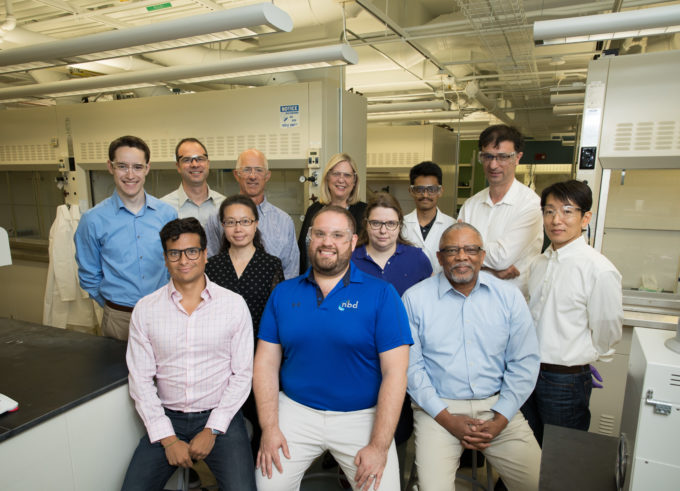A Q&A with Co-founder Deckard Sorensen
NBD Nano changes the way surfaces interact with water and oil. Co-founders Deckard Sorensen and Miguel Galvez turned down the job offers they had upon graduating college to make NBD Nano a reality, and their gamble worked out.
The company joined Greentown Labs in January 2013, and now has an 8,400-square-foot office in Lexington, Mass. In 2015, Forbes named Sorensen to its 30 Under 30 list.
Tell us a bit about yourself and how you got to the point of founding NBD Nano.
While I was at Boston College, I was looking at biomimicry. Biomimicry is a new, innovative field of biology, which is set to look at nature for inspiration for sustainable technology. That’s where I came across the Namib Desert beetle. You know how our namesake is NBD Nano? NBD actually stands for Namib Beetle Design.
The Namib Desert beetle lives in an area of the world that only gets a half inch of rainfall per year, however every morning it climbs to the top of a sand dune, sticks its back up to the wind, and drinks 12 percent of its weight in water. It does that by alternating hydrophobic, or water-hating, and hydrophilic, or water-loving, regions on its back. It drinks 12 percent of its weight in water by attracting fog in the hydrophilic parts, and then channeling it on the hydrophobic parts down to its mouth.
So we use this beetle as inspiration to create hybrid, functional surfaces that modify how liquids interact with them. What NBD Nano is, at its core, is a specialty chemical platform where we have figured out how to modify and functionalize our core chemistry materials so that we can have different interactions of water and oils with our surface.
What are some of the applications of this?
We’ve commercialized two products to date. The first one is our Invisiprint technology. Invisiprint is a hydrophobic and oleophilic technology, so water-hating and oil-loving. What we’ve figured out is a specific surface wettability that, once you put a fingerprint on the surface, it actually spreads the oils on the surface and allows the light to pass through. So even though you’re putting a fingerprint down, it appears invisible. We’ve commercialized that with one of the leading screen protector brands, named ZAGG. That’s just an initial demonstration—you can imagine that there are many other surfaces that have a fingerprint problem.
The second product is called RepelFlex. It’s a fluorine-free, solvent-free UV hard coat that still has anti-stain properties. There’s a number of different applications there. The first application that we’ve entered is in the electronic accessory market, and have done some significant trials in the automotive sector, as well as leathers.
We’re always eager to learn about Greentown Labs’ members’ climate stories—how is NBD Nano cleantech?
We were able to apply our hydrophobic coating to the external side of tubes in a steam condensation unit. So we actually were able to pilot, with the Tennessee Valley Authority, 10-meter-long tubes with our hydrophobic coating on there in a steam power plant environment. What we were doing is improving the condensation heat transfer rate, which means you can actually use less fuel to have the same amount of energy output. We were improving it anywhere from five to 35 percent—it depends on where you are in the power plant, in terms of the tube location. We’ve since licensed that to a tube manufacturer that’s looking to implement that in power plants around the world, and that would mean a reduction in carbon emissions.
The other is we had a grant from the Department of Agriculture, where we were directly mimicking the Namib Desert beetle and applying hybrid coatings to fog nets. What a fog net is, it’s a passive collector of water for agricultural purposes. We were able to pilot our fog nets in California and show, from the addition of our coatings, a 5-7x improvement of passive water collection.
NBD Nano has raised roughly $14.5 million in venture capital, and is now generating revenue. The 14-person company is scaling up, according to Sorensen. To learn more, visit NBD Nano’s website.
Greentown Labs is a community of bold, passionate entrepreneurs creating solutions for today’s biggest climate and environmental challenges. Located in Somerville, Mass., Greentown Labs is the largest cleantech incubator in North America, operating a 100,000 sq. ft. campus comprised of prototyping and wet lab space, shared office space, a machine shop, electronics lab, and a curated suite of programs and resources. Greentown Labs is home to more than 100 startups and has supported more than 230 since its inception.

